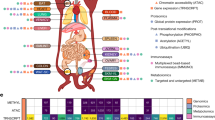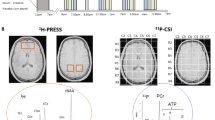Abstract
OBJECTIVE: To test if a diet of 4.2 MJ/24 h as six isocaloric meals would result in a lower subsequent energy intake, or greater energy output than (a) 4.2 MJ/24 h as two isocaloric meals or (b) a morning fast followed by free access to food.
DESIGN: Subjects were confined to the Metabolic Unit from 19:00 h on day 1 to 09:30 h on day 6. Each day they had a fixed diet providing 4.2 MJ with three pairs of meal patterns which were offered in random sequence. They were: six meals vs two meals without access to additional foods (6vs2), or six meals vs 2 meals with access to additional food (6+vs2+), or six meals vs four meals (6+vsAMFAST). In the AMFAST condition the first two meals of the day were omitted to reduce daily intake to 2.8 MJ and to create a morning fast, but additional food was accessible thereafter. Patients were confined in the chamber calorimeter from 19:00 h on day 2 until 09:00 h on day 4, and then from 19:00 h on day 4 to 09:00 h on day 6. The order in which each meal pattern was offered was balanced over time.
MEASUREMENTS: Energy expenditure (chamber calorimetry), spontaneous activity (video) and energy intake (where additional foods were available) during the final 24 h of each dietary component.
SUBJECTS: Ten (6vs2), eight (6+vs2+) and eight (6+vsAMFAST) women were recruited who had a BMI of greater than 25 kg/m2.
RESULTS: From experiment 6vs2 the difference between energy expenditure with six meals (10.00 MJ) and two meals (9.96 MJ) was not significant (P=0.88). Energy expenditure between 23:00 h and 08:00 h (‘night’) was, however, significantly higher (P=0.02) with two meals (9.12 MJ/24 h) compared with six meals (8.34 MJ/24 h). The pattern of spontaneous physical activity did not differ significantly between these two meal patterns (P>0.05). Total energy intake was affected by neither meal frequency in experiment 6+vs2+ (10.75 MJ with six, 11.08 MJ with two; P=0.58) nor a morning fast in experiment 6+vsAMFAST (8.55 MJ/24 h with six, 7.60 MJ with AMFAST; P=0.40). The total diet of subjects who had a morning fast tended to have a lower percentage of total energy from carbohydrate (40%) than when they had six meals per 24 h (49%) (P=0.05). Subsequent energy balance was affected by neither meal frequency (6vs2; P=0.88, 6+vs2+; P=0.50) nor a morning fast (P=0.18).
CONCLUSIONS: In the short term, meal frequency and a period of fasting have no major impact on energy intake or expenditure but energy expenditure is delayed with a lower meal frequency compared with a higher meal frequency. This might be attributed to the thermogenic effect of food continuing into the night when a later, larger meal is given. A morning fast resulted in a diet which tended to have a lower percentage of energy from carbohydrate than with no fast.
International Journal of Obesity (2001) 25, 519–528
This is a preview of subscription content, access via your institution
Access options
Subscribe to this journal
Receive 12 print issues and online access
$259.00 per year
only $21.58 per issue
Buy this article
- Purchase on Springer Link
- Instant access to full article PDF
Prices may be subject to local taxes which are calculated during checkout




Similar content being viewed by others
References
Fabry P, Foder J, Hejl Z, Braun T . The frequency of meals—its relation to overweight hypercholesterolaemia, and decreased glucose tolerance Lancet 1964 ii: 614–615.
Metzner HL, Lamphiear DE, Wheeler NC, Larkin FA . The relationship between frequency of eating and adiposity in adult men and women in the Tecumseh Community Health Study Am J Clin Nutr 1977 30: 712–715.
Edelstein SL, Barrett-Connor J, Wingard DL, Cohn BA . Increased meal frequency associated with decreased cholesterol concentrations; Rancho Bernado, CA Am J Clin Nutr 1992 55: 664–669.
Kulesza W . Dietary intake in obese women Appetite 1982 3: 61–68.
Beaudoin R and Mayer J . Food intakes of obese and non-obese women J Am Diet Assoc 1953 29: 29–33.
Fricker J, Giroux S, Fumeron F, Afelbaum M . Circadian rhythm of energy intake and corpulence status in adults Int J Obes 1990 14: 387–393.
Bellisle F, Rolland-Cachera M, Deheeger M, Guilloud-Bataille M . Obesity and food intake in children: evidence for a role of metabolic and/or behavioural daily rhythms Appetite 1988 11: 111–118.
Prentice AM, Black AE, Coward WA, Davies HL, Goldberg GR, Murgatroyd PR, Ashford J, Sawyer M, Whitehead RG . High levels of energy expenditure in obese women Br Med J 1986 292: 983–987.
Dallosso Hm, Murgatroyd PR, James WPT . Feeding frequency and energy balance in adult males Hum Nutr Clin Nutr 1982 36C: 25–39.
Verboket van de Venne WPHG, Westerterp KR . Influence of the feeding frequency on nutrient utilization in man: consequences for energy metabolism Eur J Clin Nutr 1991 45: 161–169.
Verboket van de Venne WPHG, Westerterp KR . Frequency of feeding, weight reduction and energy metabolism Int J Obes Relat Metab Disord 1993 17: 31–36.
Verboket van de Venne WPHG, Westerterp KR, Kester ADM . Effect of the pattern of food intake on human energy metabolism Br J Nutr 1993 70: 103–115.
Holland B, Welch AA, Unwin ID, Buss DH, Paul AA, Southgate DAT (eds) . McCance and Widdowson's the composition of foods, 5th edn The Royal Society of Chemistry and Ministry Agriculture, Fisheries and Food: Cambridge 1991.
Coyle BL . An investigation into the energy requirements of patients with Crohn's disease PhD thesis, University of London 1992.
Brown D, Cole TJ, Dauncey MJ, Marris RW, Murgatroyd PR . Analysis of gaseous exchange in open circuit indirect calorimetry Med Biol Engng Comput 1984 22: 333–338.
Ravussin E, Lillioja S, Anderson T . Deteriminants of 24-h energy expenditure in man: methods and results using a respiratory chamber J Clin Invest 1986 78: 1568–1578.
Levine JA, Eberhardt NL, Jensen MD . Role of non-exercise activity thermogenesis in resistance to fat gain in humans Science 1999 283: 212–214.
Kinabo JLD, Durnin JVGA . Effects of meal frequency on the thermic effect of food in women Eur J Clin Nutr 1990 44: 389–395.
Garrow JS, Durrant M, Blaza S, Wilkins D, Royston P, Sunkin S . The effect of meal frequency and protein concentration on the composition of the weight lost by obese subjects Br J Nutr 1981 45: 5–15.
Heini AF, Kiek KA, Lara-Castro, Weinsier RL . Relationship between hunger-satiety feelings and various metabolic parameters in women with obesity during controlled weight loss Obes Res 1998 6: 225–230.
Bellisle F, McDevitt R, Prentice AM . Meal frequency and energy balance Br J Nutr 1997 77 (Suppl 1): S57–S70.
Blundell JE, MacDiarmid JI . Fat as a risk factor for overconsumption: satiation, satiety and patterns of eating J Am Diet Assoc 1997 97 (Suppl 7): S63–S69.
Poppitt SD, Prentice AM . Energy density and its role in the control of food intake: evidence from metabolic and community studies Appetite 1996 26: 153–174.
Raben A, Macdonald I, Astrup A . Replacement of dietary fat by sucrose or starch: effects of 14d ad libitum energy intake, energy expenditure and body weight in formally obese and never-obese subjects Int J Obes Relat Metab Disord 1997 21: 846–859.
Golay A and Bobbioni E . The role of dietary fat in obesity Int J Obes Relat Metab Disord 1997 21 (Suppl 3): S2–S11.
Acknowledgements
We are grateful to the staff of Salmon and Holgate Wards, St Mark's Hospital for patient care and to the patients for their participation. We are grateful for statistical advice from The Biometrics Department at St Bartholomew's Hospital Medical College (Peter Brown, Janice Thomas and Kay Sanders), Malcolm Law and John Stapleford.
Author information
Authors and Affiliations
Corresponding author
Rights and permissions
About this article
Cite this article
Taylor, M., Garrow, J. Compared with nibbling, neither gorging nor a morning fast affect short-term energy balance in obese patients in a chamber calorimeter. Int J Obes 25, 519–528 (2001). https://doi.org/10.1038/sj.ijo.0801572
Received:
Revised:
Accepted:
Published:
Issue Date:
DOI: https://doi.org/10.1038/sj.ijo.0801572
Keywords
This article is cited by
-
Evidence-based recommendations for natural bodybuilding contest preparation: nutrition and supplementation
Journal of the International Society of Sports Nutrition (2014)
-
Reproductive risk factors and breast cancer subtypes: a review of the literature
Breast Cancer Research and Treatment (2014)
-
International Society of Sports Nutrition position stand: meal frequency
Journal of the International Society of Sports Nutrition (2011)
-
Bath Breakfast Project (BBP) - Examining the role of extended daily fasting in human energy balance and associated health outcomes: Study protocol for a randomised controlled trial [ISRCTN31521726]
Trials (2011)
-
The Effects of Consuming Frequent, Higher Protein Meals on Appetite and Satiety During Weight Loss in Overweight/Obese Men
Obesity (2011)



